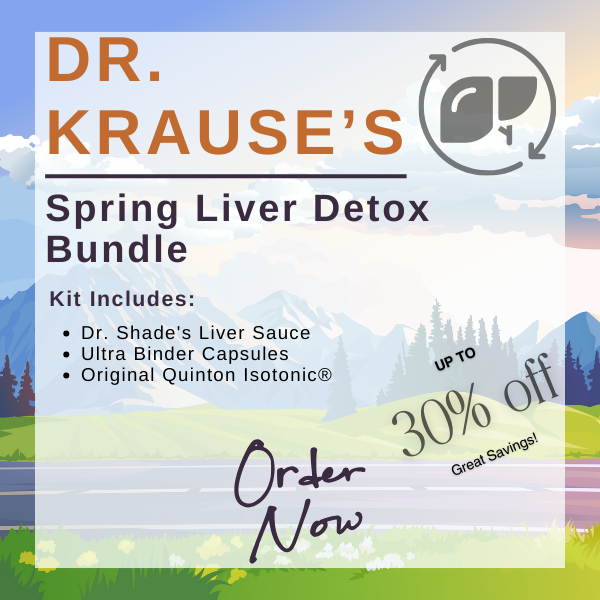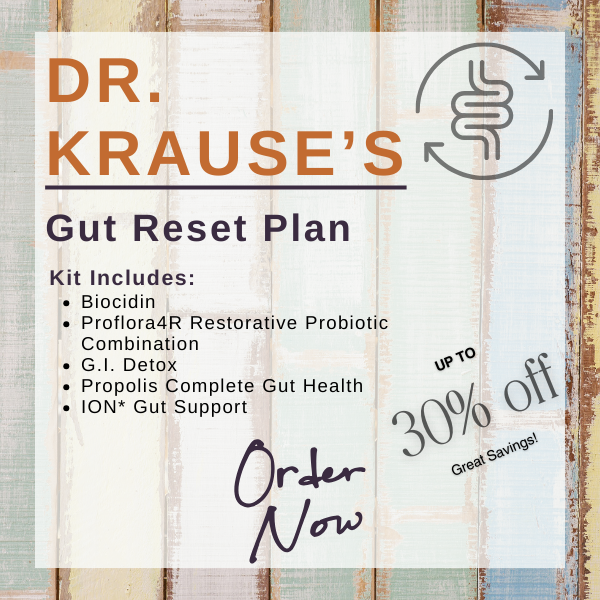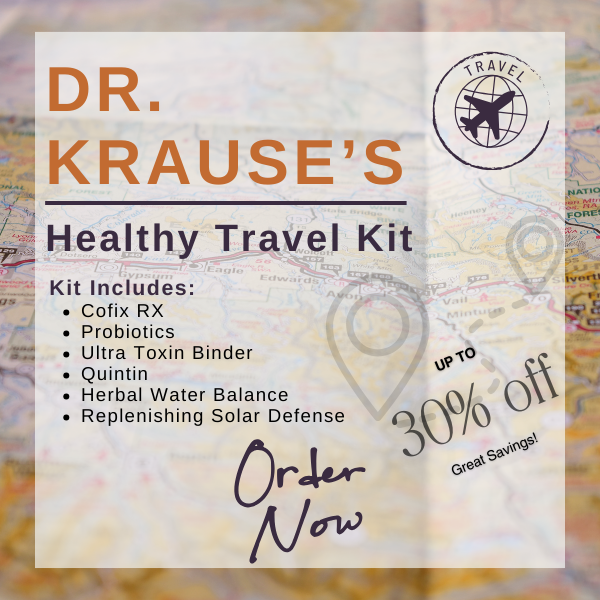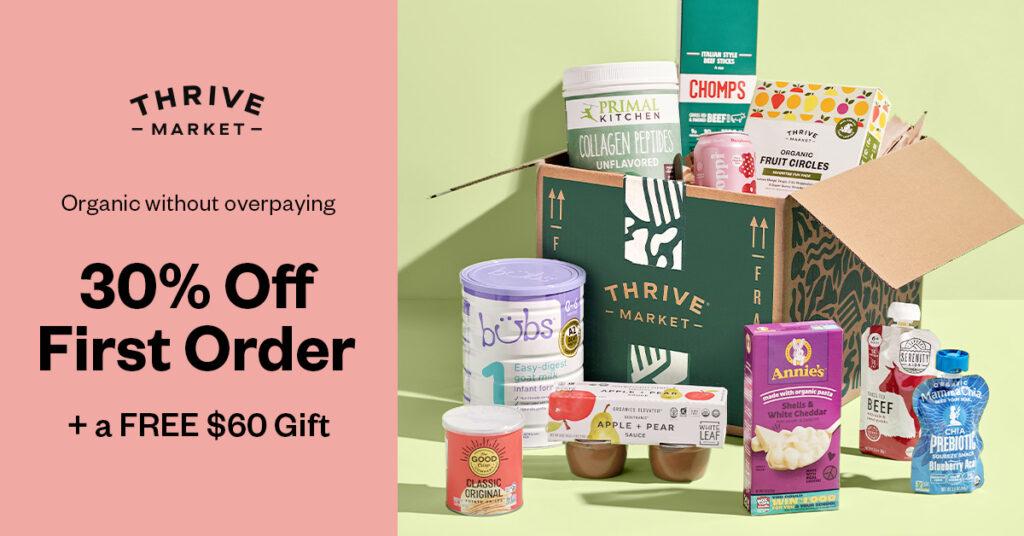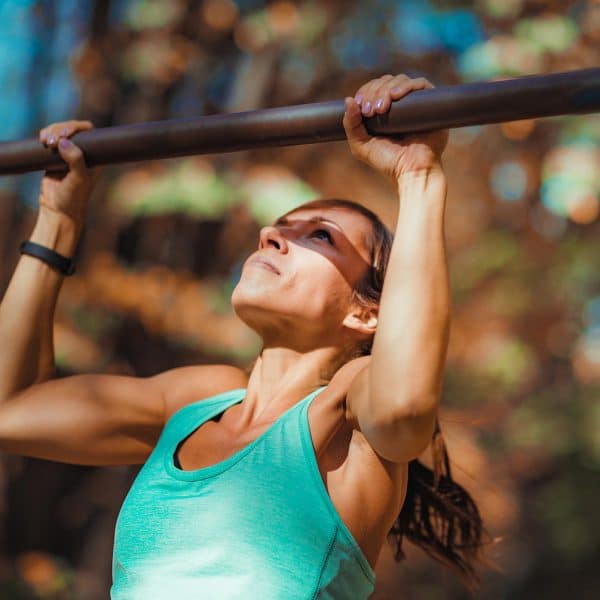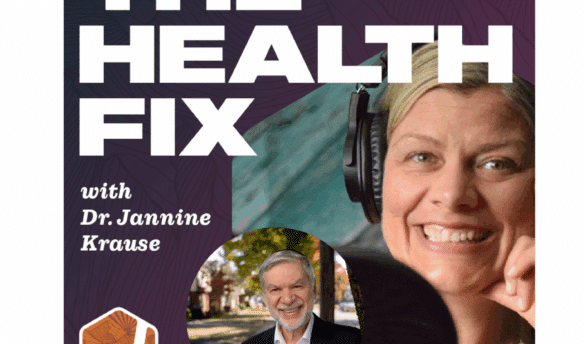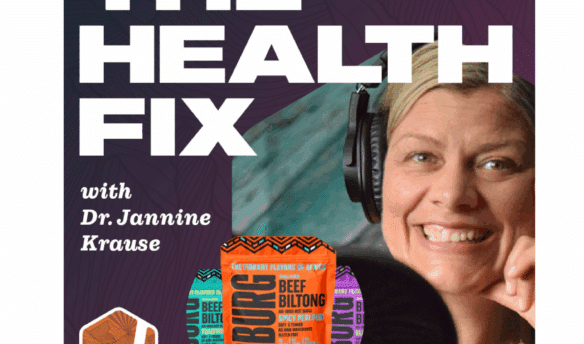Pelvic pain, painful sex, bladder or bowel issues? Just diagnosed with a pelvic health issue, suspecting something is going on or working to find your solution? Curious how emotions & mental states impact pelvic health? After experiencing pelvic floor issue with the birth of her son Dr. Brianne Grogan switched her physical therapy career to focusing on the pelvic health. Almost two decades later, Dr. Bri has a wildly successful Youtube channel and multiple programs to help those struggling with pelvic floor conditions thrive. In this episode of The Health Fix Podcast, Dr. Jannine Krause interviews Dr. Brianne Grogan on how developing a strong relationship with yourself to feel your emotions can provide fast symptom and pain relief in the pelvis or anywhere in the body.
Dr. Krause’s Protocols
Instructions Included
Traveling soon? Looking to detox or reset your gut? Try one of Dr. Krause’s Fullscript plans.
What You’ll Learn From This Episode:
- Lessons learned & inside scoop from a darkness retreat
- The power of bouncing vibration for the body
- How movement is a great way to start connecting to your body
- Feeling yes & no in the body
Resources From The Show:
- Sky Caves Darkness Retreats
- Does Your Pelvic Floor Need Help?
- Mind Body Pelvic Health Boot Camp – 11 days
- Mind Body Pelvic Health Academy – program for those with or those who work with those with pelvic floor issues
- Mind Body Pelvic Health Collective – Women only pelvic health – monthly membership
- The Experience – Dr. Bri’s 1:1 immersive pelvic health program
- Vibrant Pelvic Health – Exercise for Pelvic Floor Health – intro into your body – “Lift” for pelvic organ prolapse and strengthening
- Overcome Pelvic Pain – tension and painful sex program
Our Partners
Podcast Transcript
2:12 – Dr. Bri’s darkness retreat experience
6:58 – Techniques for letting things go / using sound / voice
11:41 – Holding emotions in and the physical impact on the body
15:02 – Reconnecting with your body
23:35 – Nervous system and traumas
29:39 – Practicing being present
34:09 – Feeling peace in your body
36:39 – Intuitions and how they manifest in the body
44:56 – Cultivate peace, roundedness and presence within
46:22 – Dr. Bri’s 10 Day Mind Body Challenge
50:09 – Dr. Bri’s Lift and Overcome programs
[Intro] Welcome to the Health Fix Podcast, where health junkies get their weekly
fix of tips, tools, and techniques to have limitless energy, sharp minds, and fit
physiques for life.
JANNINE: Hey Health Junkies, on this episode of the Health Fix Podcast, I’m interviewing
Dr. Brianne Grogan. If that name sounds familiar, yup, she’s been on the podcast
before. Dr. Brienne is a doctor of physical therapy and she focuses on pelvic health. She
has a wildly successful YouTube channel with over 450,000 subscribers and over 700 videos
all about improving your pelvic floor and your pelvic health function. And on this episode,
we’re going to be talking about her recent darkness retreat. We’re going to be talking about the deep
connection of the pelvis to emotions, to trauma, to pain in the body. And really how you can develop
a strong relationship with yourself so that you can feel emotions and get fast pain relief.
Doesn’t even have to be in the pelvis. So let’s reintroduce you to Dr. Brienne Grogon.
Hey, health junkies. I am Dr. Brianne Grogan on again today. And I’m so excited because it’s been a
a while and I’m looking forward to reconnecting because she said so many changes with her
career, her life, everything in the last couple of years. So Dr. B, welcome back to the health
fix podcast.
DR. BRI: Oh, I’m so happy to be back. Thank you.
JANNINE: Man it’s been too long. And so
I’m like, man, we need it. We need a regular segment of fun here and talking about health
in general, but really what brought me to bringing you back on is it seems that we’re
on this similar trajectory of really trying to get that message out that we are so connected
to our mindset. And I saw that you recently went through a darkness retreat and I was like,
“Ooh, how was that?” So this scoop, what led you to be like, “Yes, I’m all in on a darkness retreat”
and how did you find? Which one suited you? Give us the background on that. That’s exciting stuff.
DR. BRI: Yeah, you know, this darkness retreat is really interesting. I heard about it a year and a half
before I did it on several podcasts that I follow. So, you know, how we are, we love our podcasts,
where it looks to me. And I kept hearing this, this information about this sky cave’s darkness
retreat. And at the time, I was actually living in Germany. But my family and I were about to
move to Oregon. And I was like, man, this keeps coming up, this darkness retreat.
And people are having these life changing experiences in this darkness. And so let me
look this up. I looked up their website and they are in Oregon. I’m like, no, you know,
we’re moving to Oregon. It’s in Oregon. So I contacted them and said, Hey, I’d love to
come. And they said, okay, but we have a year and a half waiting list.
Oh, I got on the waiting list and lo and behold, a year and a half later,
which my dates happen to be right over the new year.
So literally I spent the new year changeover from 2023 to 24 in darkness.
So it was four nights and essentially five days because you know you go in and then you have four
nights and then the last day you come out. So really four nights, five days in complete darkness
over the new year. And it was it was so life changing. It really was. It was life just like
everyone says. It was life changing.
JANNINE: Wow.
– I think a lot of people think about first,
like dipping their toes into some of these silent retreats,
which for me, I’m so like,
“Oh, I’m like, oh my gosh, silence.”
And then silence plus darkness, correct?
‘Cause you’re all by yourself in there.
DR. BRI: Yeah.
Now I had kind of prepared by doing actually two silent,
well, sort of silent, two retreats that were about
four days long.
I believe there were four days, three nights of silence
where there was no talking, no human interaction
with one another, although there was interaction
because we were meditating together
and we also were doing movement.
So it was a really cool blend of ecstatic dance, yoga.
It was a lot of movement practices.
So there was some noise, there was some songs
for our ecstatic dance, but nobody was looking at each other.
So there was no eye contact and there was no talking
with the other participants.
So it was like this mish mash of like ecstatic dancing movement
with silence and meditation.
It was really cool.
And for me, that was like the perfect entry
into silent retreating because I have to move my body.
I have to move and I need to like release
’cause so much comes up when you are sitting with yourself
and sitting with your thoughts.
So much comes up that there has to be a way to release it.
And the movement, silent retreats that I did,
was a great way to help release some of that emotion.
And when I was in the darkness retreat,
completely by myself, I brought, I was kind of silly.
I brought all sorts of tools and toys.
And I brought like bands, like exercise bands.
And I had these plans to do some movement
and yoga and like jumping jacks.
And I did, I was moving a lot because it really helped me manage my fear, my anxieties, my
emotions, things that were coming up.
So movement is so healing.
JANNINE: It is, it is, you know, and I think a lot of people have definitely connected some of
that, right?
Like you’re women who run and they’re like, if I don’t run them, I’ll lose my mind, right?
It’s where I sort of things out.
But I think we don’t take it deeper than that, right?
And like you mentioned, you know, really being able to feel our emotions and feel them at
end, let them go.
And you posted and this is, I thought it was just the perfect timing for this podcast.
You had posted on Instagram yesterday where you were kind of like showing just, just
rocking on your, your heels, just kind of tapping.
It was almost like a heel tapping.
I don’t know what the word would be bouncing maybe.
I don’t, I forget what you called it.
We’ll let you.
DR. BRI: Bouncing.
It’s a very loose, it’s not jumping, but it’s just gently bouncing your heels up and
off the ground and you get this whole body vibration.
It’s amazing from your heels all the way up to your head.
You can feel this kind of bouncing vibration.
JANNINE: And I had said in my comment on them,
I’m like, oh my gosh, I do this when I need to let something go.
And I think a lot of us, we have habits
that we sometimes employ automatically,
but I don’t think we’re connecting
that that’s why we’re doing it.
Have you found in your practice
or just like maybe an observation of people
yourself that there are other things you’re gravitating towards when you need to let something
go?
DR. BRI: Yes.
For me, it’s actually voice and vocalization that is huge for me.
In the ways that I was trained for embodiment practices, I’m actually a certified embodiment
coach as one of the many facets of what I do.
I have also done a lot of work in studying Tantra and lots of different modalities have come together
but movement, breath, and sound are the three tools that we really use and embodiment and are often taught in Tantra as well and
It’s ways to just release energy really that’s what we’re doing
And so breath work has become very very popular and a great way to release
Emotion and energy
movement as we’ve been talking about. But for me, sound is one of the most important tools. So just
like a, it can sound just, it can sound terrible. Sometimes those are the best ones to just let stuff
go is just vocalizing. And actually, I was working with a patient recently and doing some treatment of
her pelvic area and really working on the stuck trauma really that was in her pelvic
bowl from a fall that she took. And I encouraged her to start releasing with sound during our
treatment together and she experienced such profound relief. She was just crying, tears were pouring
down her face but they were joy, like tears of joy as she began releasing through sound. And it
It was really helping her release the pain, the tension, and you know, from the energy,
the stuck energy and emotion.
JANNINE: I find sound fascinating.
Like even how you’ll find sometimes I mean a baby, right?
A baby will kind of hum to a different, you know, tune when they’re kind of self soothing
versus, you know, why I need, you know, something kind of thing.
And we’ve lose that.
It’s crazy.
DR. BRI: Well, I love that you brought that up because I actually tie so much to get her with growing up years and
Getting things stuck inside so okay
Let me take this back if you don’t mind if you’ll humor it me, okay
So I think it’s really interesting that as little kiddos we are in continent
We don’t have control of our bladder or our bowels right
and as we get older as we get into toddlerhood and we start potty training and all that we
Start learning how to control our bowels, our bladder, and part of that is our pelvic floor muscles
It’s just part of the process. There’s more to it than pelvic floor muscles
But you know our pelvic floor muscles are coming online the whole
physiological process or neurological process of
urination and being able to control our bladder is coming online
But part of it is learning how to control our muscular tension to keep things in and let things out
That is part of it. And at that same time, that’s often when we are no longer cute little babies who are
crying and needing their mom’s attention. And that’s the only way they can get help is through crying and
making noises, right? And we start getting in trouble for having tantrums or we start getting in trouble
we start being told to be quiet or that doesn’t hurt or that doesn’t, you know, get over it type of
messaging, you know, and that begins when we are about at
potty training age for many of us through no fault of our
parents, just the way it’s kind of been. And I think it’s
really interesting that we’re really learning to hold in so
much all around the same time around the same age, we’re
learning to hold everything in our P our poops and our
emotions. And we get really good at holding things in. And it
it’s really takes permission to learn how to release again because we’ve really spent our whole life
learning how to toe the line and to keep up appearances and to not look like a crazy person.
So it takes retraining.
JANNINE: It does. It does. And I think for us, there’s also, like you said,
you know, that holding, like if we look, especially with women,
Constipation is such an issue, right?
DR. BRI: Yeah.
JANNINE: And holding in, holding in emotions, things of that nature.
And a lot of times women will work with me and will go through all kinds of
gut repair stuff and we’ll go through the hormones, we’ll go through the microbiome
and we’re left at like, okay, we’re still doing this.
And it’s like, I always have to do something public for her because that’s how I work.
But I’m like, if we’re not going through public for PT and getting
results, I’m going, all right, we got emotions.
We’ve got emotions here.
DR. BRI: Emotions. Yeah, I mean, I have found it again and again and again. And also personal experience
with myself. I think that I feel like I’m my own best evidence based practices on me and on my
clients. And of course, we love research and we love studies that support the work that we do.
However, I think that lived experience is so, so profoundly powerful to acknowledge. And I definitely
have had a lot of connections made, a lot of connections between periods of stress, tension,
emotional upheaval and physical impact on my body. And I’ve seen it time and time again with my
clients. The emotional becomes physical. And then the physical is emotional. And so that
impacts our emotions even more. And it becomes this cycle. JANNINE: Absolutely. Absolutely. And then,
you know, I’m happy that there are folks like us talking about this and and it’s needs more
obviously that’s why we’re here today but I do know that even as a doc you’ve probably seen this
even as a physical type is we’re still trying to kind of encourage and teach and so today I
hope we can kind of inspire folks to have a couple little tools in their toolbox to be able to kind
of take it forward because there was something that you mentioned about being able to feel the
emotions but also have this cult of like cultivation of calm and peace within the body. And I think
that’s where a lot of us are like, okay, I feel things, you know, a lot of patients come in and
they’ll be like, I know stuff stuck. But I don’t know how to release and how to keep releasing. Like
maybe I’ll have a big release, but then it just gets stuck again or they’ll do acupuncture with
with me and they’ll be like, that was amazing.
And then like a month later, like, now what I do?
DR. BRI: Totally, totally.
And it can be a lot.
It can be a lot when you get that stuff moving
and it can be overwhelming and scary.
I remember I did a tapping session once
with a friend of mine who was kind of practicing with me,
the EFT tapping.
And I think we went a little too far
and it brought up so much that I was completely overwhelmed
by the end.
And so for that reason, I think a lot of people have maybe experienced something similar and
it’s like, I want to feel my stuff.
I don’t want to get things moving.
It’s safer when it’s bottled up inside and when I can just pretend it’s not there.
Or again, they’re afraid they’ll be caught in that, in the wave of emotion and never
get out.
And so it is so important to have tools to, to learn how to move it through and ride those
waves of emotion.
so you don’t get caught in the undertow.
And I mean, it’s a practice.
And it’s very helpful to have guidance
from somebody who understands and can help you,
whether that’s a therapist or a somatic type
of somatic movement expert or an embodiment coach
or a naturopath or a physical therapist
who understands this information is very helpful.
And also cultivating that sense of inner peace
is so, so helpful as well.
So I could take this back to my darkness retreat
if that is helpful, okay?
JANNINE: Yes.
DR. BRI: Yeah, so I mean, there’s lots of ways to do this.
And I think one way that has really helped me
and what I encourage for a lot of my clients
is to really connect with your body as much as you can
and do more work with your body,
whether that’s exercise for many of us,
it starts with just exercise as an embodiment practice
because that is getting out of your head
into your body through running or walking or movement,
going to the gym, you know, that’s beautiful, beautiful start.
For me, my next step was bringing in and layering
in more dance and hip circles, which you,
I mean, you and I are sisters in this.
We love our hip circles.
I’ve been talking about hip circles on YouTube
for, I don’t know, 15 years,
but I mean, and of course, culturally,
this is a huge thing in other cultures.
this is normal for other cultures is to move their hips.
But for my culture that I grew up in as a woman from Oregon,
a white woman from Oregon with Scandinavian background,
is not something we do.
And so, by getting in touch with my body
through hip circles and dance and whatever,
that was really the next step too.
So embodiment practices that get you in touch
with your body is very, very helpful
and it’s not an overnight fix,
but over time, it helps you cultivate that inner piece
and that sense of self trust and self knowing
and inner self resourcing, being able to resource yourself
when you’re feeling the ups and downs of life.
But then layered on top of that,
what really helped me in my darkness retreat
was visualizing this little candle.
So this is very specific.
But for me, I ended up visualizing this little tiny candle
like a tea light candle in my pelvic bowl
that was just like this little steady flame.
And I just pictured it being in my pelvic area,
this little candle.
And every time I was feeling fear,
’cause I’m a little scared of the dark,
to be honest with you.
So.
(laughs)
JANNINE: Yeah.
DR. BRI: I’d hear weird sounds or I’d be like,
I don’t know, just also when is this gonna end?
Boredom, boredom was huge.
Here’s another one that’s kind of,
that came up for me in the dark.
I was so constipated.
We can talk about that here, right?
I talk about this all the time.
JANNINE: Yeah, of course.
DR. BRI: I was so constipated, everyone.
I was just, I couldn’t go to the bathroom
’cause I was so off of my schedule
and I wasn’t moving the way I normally like to move.
I didn’t have my computer, my phone,
like the things I do to kind of get things moving.
I didn’t have my coffee, I didn’t have any of my things.
And so I couldn’t go to the bathroom
and I was very anxious about this
and all of these thoughts coming through my head,
all of these emotions coming up,
fear of the dark, when’s this gonna end,
boredom, et cetera and so forth.
And so I just kept coming back to my movement practices,
which I just mentioned, I would do some movement.
And then I came back to that little candle,
that little inner flame within
that was just steadily burning in my imagination, of course.
But it was a really beautiful anchor point
to keep me grounded and centered in myself.
And it’s like, despite the challenges
and despite the ups and downs and all of that,
I just brought it back.
And it takes, you know, it takes dedication and practice
and consistency and self trust,
but I think because of all the years of embodiment work
and dance and practice and meditation
and practice and getting quiet and coming inward,
I was able to really get a lot out of that
when I was in the dark.
And I think anyone could benefit from tuning in to something that anchors them to a steady guide within.
JANNINE: It makes sense.
It makes sense.
I mean, the whole idea of being in the dark for me and like, gosh, your
schedules, like you said, would be off.
But also, like, did you have any clue of like whether it was day or nighttime at all?
Like–
DR. BRI: Well, so I have to say I cheated a tiny bit.
The room that I was in, it was the retreat center I went to had two basically caves, like they were
built into the earth. And then the one that I was in was a tiny little cottage that had been
retrofitted and converted into a completely dark light sealed room. So everything that had been like
a window, for example, was completely sealed off with like there was nothing coming in through that
no light at all. But there was a door, you know, that you could get in and out of. And there was a
protector that kept the light out from the bottom crack of the door. But I actually,
I moved just a tiny little corner of this, just a tiny bit. So that I just had a sense of like,
is it the middle of the night or is it like, is there a little light coming through? It just,
I needed that for my sense of control and to not go insane, to have just a tiny idea of
possibly what time of day it was.
So, yeah.
JANNINE: I don’t blame you.
I mean, I was thinking about it when you had described it and I was like, man, I think
I would be trying to hack something like I need to know or like, do they screen you?
Like do they take your cell phone and your keys and everything like do they like search
you?
DR. BRI: No, they don’t.
you could like I did have my phone in there and I didn’t use it but I could have you know and
there and also you can leave like you have the freedom to leave the room you’re not locked in
so yeah but I mean for me I really wanted the full experience so I I did it except for that
tiny little mini cheat.
JANNINE: We won’t we won’t hold you accountable for that.
DR. BRI: Don’t tell.
JANNINE: I mean just
the fact that you did it in and of itself because like even though they have like a year and a half
long waiting list, I mean really how many of the population, how many people really do that
unless someone’s been incarcerated and had involuntary confinement. You know those kind of things are
just it’s it’s few and far between. So I would say I give you a lot of props because I’ve
attempted trying to do a silent retreat and haven’t even got that far. So super super props for
for even doing it.
DR. BRI: Thank you. And yeah, again, I think it really is something that
I wouldn’t suggest anyone to just go into it blindly if they weren’t prepared, you know,
and I think that the ability that I did have to feel safe in my body. And again, that safety is
so, so key. It’s the foundation in order to really learn and take in any information and to really
heal to really get better. You got to have that foundation of safety. And I think the more we can
again, turn within, come within, come into our bodies, come into our safety slowly, because
especially for people with a history of trauma, it’s not going to happen overnight. I mean,
it’s going to take help and assistance and working with someone and working with yourself
to really begin to feel safe in your own skin where you can feel and you can feel safe feeling.
it takes time, but it’s so powerful, so powerful.
It allows you to do crazy things if you want to, like go to a darkness retreat or do a silent
retreat or you know jump off on a bungee cord or something like that, whatever it may be.
That’s your thing. You can do it, but I really think you got to go into these things prepared.
JANNINE: Yeah, safety is such a huge topic. And I think a lot of people are not, are still not connecting
safety because we think it’s safety like, you know, I’m safe at my home, I can lock my doors.
I’m not feeling threatened in my environment. But it’s like, what if, and this is the hardest
topic to really bring up with folks, what if it’s you that doesn’t feel safe? Like, what if you are
the person that’s perpetuating that, that not safe situation? How, how do you work with client
to work with? How do you, you know, even yourself, if you want to talk about how you begin to cultivate
the safety feeling because a lot of people I think go, you know, Brianne, I didn’t really have trauma
per se, like that somewhat will consider like a big T. But maybe there’s some little T’s. I don’t
know. How do I know like safe versus not safe? How do I start working on this concept and
exploring it in my body?
DR. BRI: Yeah. I mean, you’re right. It’s a huge concept. But basically, I mean,
the nervous system is a, it’s a servant of protection. It’s always scanning our environment for threats
and it will determine all sorts of things as threats.
They don’t necessarily have to be someone breaking into your home or a fire or some, you know, massive thing like that.
Little tiny things can be threats and it’s very dependent on you, the person and your personal history
and what is perceived by your nervous system as threatful for you.
So I think it’s really fascinating pain science.
I just love the geek out on it.
And I love following the NOIA group.
Are you familiar with them?
The NOIA group?
JANNINE: No.
– No.
DR. BRI: Okay.
It’s the, oh my gosh, I’m gonna get this wrong.
I think it’s the, it’s the neuro, oh my gosh.
What are they?
It’s the Neuro Orthopedic Institute of Australia,
I think it is.
JANNINE: Okay.
DR. BRI: But amazing pain science researchers,
and they’ve discovered that really understanding pain
and the way pain and symptoms show up in our body,
not necessarily because of actual physical injury in our tissues in some cases, but because
of the way signals are interpreted in the mind.
And it’s not saying that the pain or the symptoms are all in your head by any means, but it
is saying that there’s lots of things that contribute to how your brain interprets the
signals that are coming into the brain.
And if there’s anything that’s making you feel danger or unsafe, it’s going to interpret
the signals coming into your central nervous system as alarm bell alarm bell alarm bell.
And it’s going to be different.
So one example that always I had stuck with me is like a violinist who has a cut on their
finger is going to potentially experience.
Well, actually, I think this has been studied by them.
They experience more pain, more significant pain because of the cut on their finger because
it impacts their livelihood.
It impacts their day to day practicing, their finances, their whole profession is impacted
if they cut or injure their finger because they can’t play their instrument whereas it
wouldn’t necessarily impact you or me in the same way.
So it really is dependent on all sorts of factors and safety is at the bottom of it.
So understanding pain, understanding how it all works is actually a pain reliever at
tonic in and of itself, but for any type of learning to occur, we have to have, we have to be able to
essentially calm our nervous system because it’s just upregulating, it’s just, it’s making meaning out of everything in our
environment. So it’s making meaning out of signals coming in, it’s even making
meaning out of what you’re hearing right now as you’re listening to us talk. And so always coming back, I guess for me, I think,
trite or cliche as it sounds a daily meditation practice or some kind of practice of getting quiet and turning inward
is very important and for safety specifically
one thing that can be really helpful is to be in the present moment be in the here and now because most likely whether you had big
tees or little tees in your past
whether you have pain and you’re looking around at your environment and the signals coming in are
Up-regulating things in your nervous system, whatever is going on, it’s more than likely that when you sit down to meditate or when you sit down to have two to three minutes of quiet, even if you don’t call it meditation, you’re probably okay.
You probably don’t have a massive threat around you at that moment.
And so just taking a minute to really be aware of that,
to bring the presence into the moment into your body,
by placing your hands on your thighs, for example,
and anyone listening could do this right now,
just put your hands on your thighs,
and just feel the weight of your hands on your thighs,
and just feel that gentle pressure of the hands on the thighs.
And you can even feel that space
between where your hands end and where your thighs begin.
That little space in between,
it just brings you right now into this now moment,
where you’re not, first of all, you’re in your body,
you’re out of your head.
So you’re not thinking about the worries of the future or
the regrets or memories or fears of the past.
You’re literally in your body right here right now.
Then from that place,
you can even just look around your room,
like let your eyes glance on something in your room.
Doesn’t matter what.
And just kind of look at the thing.
Look at where that thing ends.
And then kind of toggle back to your body
and be in your body and notice that space
between where the thing ends and where your body begins.
And just do that a couple of times,
looking around your room and just reminding yourself,
I am here right now.
I am safe.
I am present and I’m okay.
In this now moment, I’m actually okay.
And from there, doing your breath work
or just a few deep breaths or prayer or journal writing
or meditation or whatever it is that speaks to you
or going on a walk, you know, getting up
and going outside on a quiet walk
where you can get out in nature and get some fresh air.
But, you know, establishing that sense of presence
and safety first is such a really powerful practice
for people to do on their own.
JANNINE: So huge, so huge because I found working with paint for all those years with acupuncture
and whatnot.
Like, yeah, we get like looping in the head like my back hurts, my back hurts, and then
it’s I can’t do this.
I can’t do that.
I’m unstable.
You know, and it just casts.
DR. BRI: Yes.
Yeah.
JANNINE: Feel that presence.
DR. BRI: Yeah.
Yeah.
It’s though it’s a simple way to interrupt that vicious cycle that because it is a vicious
cycle of the fear and the stress causing tension causing pain causing more
tension and pain causing more fear and stress causing more tension and pain
causing more fear and stress. So you’ve got to find a way to interrupt that
cycle and that presence and safety even if even if you are having to simply
accept that there is pain even if you have to say okay I am here right now I’m
I’m in my body, I am present, and I hurt my back hurts.
But kind of just accepting that and also realizing
that you are in a safe environment,
your environment is safe, you have food, you have water,
you have shelter, hopefully, hopefully anyone listening,
you know, we need to get those physiological needs met,
of course, but just that acceptance
and kind of leaning into the fact of,
this is where I am right now without stories attached
it from the future or of the past. Because when we get in those thought loops of the back
pain hasn’t ended, nothing has worked. What does this mean for my family? My partner’s gonna leave
me because of X-Y & Z, you know, when we get in these thought loops. And so simply just accepting
where you are right now and being present is a really important first step. We don’t need to
feel amazing as we’re sitting there. We just have to realize I am here right now. This is me right
now. And I’m not going to think about the future of the past and just can be present for a moment.
It’s a really powerful way to interrupt that pain cycle and the thought loops that can get us,
that can keep us trapped.
JANNINE: Oh my gosh. Yes. Absolutely. Absolutely. And, you know, I think I never
fully understood the pain loops that a lot of my patients were dealing with until I ended up
having some pretty bad sciatica because of a blown out L5
disc and and I had to like kind of go back through all the
techniques I was working with to interrupt it and and it’s
crazy though like how you can in the moment just be like oh
good everything’s fine and yeah it comes down and I know a lot
people listening might be like yeah your kids are full of
crap guys just gotta try it you don’t know till you try
DR. BRI: Mm-hmm. Yeah. Yeah, and again, it’s it’s that neutralizing. We’re trying to ultimately neutralize
We’re not trying to make life perfect or say things are perfect or fool ourselves in any way
It’s really getting to neutral
To neutralize not minimize. We’re not trying to minimize or like oh, you know, this is all in your head or it’s all
You know, just get over it like that’s not what we’re saying at all
It’s just neutralizing taking the charge away
JANNINE: Huge. It’s huge.
[Advertisement] Hey, health junkie.
Open to learning more from Dr. Bri.
Well, she’s got quite a few different programs.
If you’re just dipping your toes in and want to learn more about pelvic health,
she is the lift and the overcome program.
Lift is tailored to those with incontinence.
Prolapse are in need of pelvic floor strengthening.
The overcome program is specific for those with pelvic pain, painful sex, and tension.
Now, if you’re open to diving into the mind, body pelvic health connection, you can check out
Dr. Bri’s new programs.
The Academy, the Collective, or the Experience.
The Academy is a way to learn all about the new standard of pelvic care in connecting the
mind and the body when it comes to pelvic floor health.
The Collective is Dr. Bree’s membership program for women to gather, connect, and learn together
and lift each other up for collective wellness.
The experience is Dr. Bri’s one-on-one private healing immersion program.
Now if any of these sound fabulous to you.
All of the links can be found in my show notes at doctorjkrausend.com episode 451.
Let’s get on with the podcast.
JANNINE: Now, you were mentioning in the darkness retreat, you came up with the little flame in the
pelvic bowl and you were imagining that.
Is that kind of like next level from getting present in the moment and working on kind
of cultivating this peace and cultivating maybe an environment of peace for you too?
Tell us.
DR. BRI: Yeah, definitely.
I mean, for me, that was just my visualization that helped me.
And part of the reason is I had really realized that when I feel peace in my body, when I
personally feel peace in my body, I do feel it in my gut, in my pelvic area.
I feel expansive, open, and relaxed there.
I mean, I feel it everywhere, but I’m just really connected with my pelvic area.
It’s the work I do.
It’s a very powerful part of the body for anyone, but I happen to be quite connected
to it.
I feel like into it, into it of hits and like yes’s and no’s.
I tend to feel it from my gut in my pelvic area.
That’s where I feel a lot of things.
And so for me, just bringing in that visual of the candle
and really cultivating that as a practice when I was in the dark
helped make that little candle seem stronger and brighter
and more powerful.
And then the cool thing is I was able to take that with me
after the darkness retreat.
And I still, still carry that little candle.
If I’m having a hard moment, I will literally bring my imagination to that little candle.
And for me, it just changed everything.
And some people might want to do something similar in their heart.
Or whatever it may be, it may not be a candle, maybe it’s a teddy bear.
I don’t know.
JANNINE: Whatever works.
DR. BRI: Whatever works.
But some things you kind of anchor you into and just quickly bring you back up.
our minds are, you know, they’re meaning making machines
and they love visuals.
And so anything you can do that really is a quick reset
with a visual of some sort is really helpful.
JANNINE: Absolutely, absolutely.
I think of it, you know, like you were mentioning,
you know, pelvis, if we talk chakras, right?
Like we’ve got some serious energy in the pelvis
and sacral chakra.
And, you know, if we go up to the heart,
we’ve got the heart chakra, throat chakra,
I think a lot of folks, when you get quiet and you start to feel things, you know, kind
of where things might be a little more stuck and you might have that awareness.
And perhaps, you know, you can expand a little bit on this in terms of how you guide folks
in this.
DR. BRI: Oh, I’m so excited.
Sorry.
I got so excited.
I cut you off.
JANNINE: I’m good.
I’m good.
Let’s go.
Do it.
DR. BRI: I love the centers of intuition and the different levels and layers of knowing. And I see it as we have
different places in our body where we have this knowing, this felt sense of knowing without knowing
why. Because sometimes we can think things through, right? We can make a pros and cons list. But that’s
different than like a gnosis, G-N-O-S-I-S, like an inner knowing and no-sis. And to me,
the different places in my body and my energy body and my chakras, we can totally bring it
there. But I tend to feel annoying, definitely in my mind, of course. Not even because of
thoughts and thinking, but just like a yes. And it just is like, it’s almost like it’s
coming from my mind, like, uh-huh, yep.
But then also in for me, I think the throat could definitely is
it’s definitely tied into the root.
I mean, it’s tied into so much, but for me, my layers of knowing are more
my mind, my heart, my gut and my root.
So those are the different places where I really feel this, this
gnosis, this knowing, these hits of like, yes, no, without having done
my pros and cons list.
And I think that all of those areas can be cultivated by people.
And that’s such a big conversation and different for everyone.
But I have a theory about folks.
And this is absolutely not proven.
So I’m really curious to know what you think about this.
This is just my own theory.
And to me, it really makes sense.
Is that I tend to hold a lot of tension in my pelvic floor.
So going back to the pelvic floor for me is huge.
I have had issues with my pelvic floor.
I’ve had prolapse.
I work in my pelvic bowl all day long.
I help patients with their pelvic floors.
I still feel whenever I have emotions come up in my life,
the first place that’s impacted is my shoulders tense up
and I get massive pelvic tension.
I get a knot of tension in my perinium,
the area between the vagina and the anus
or between the testicles and the anus and male bodies.
And that’s just the first place I feel stress
is my pelvic bowl and for many other people too.
And so for me, my theory is that one reason we feel
these like hits of intuition that say no or yes
is that when something is right for us, we expand.
It’s like a, it’s not a contraction,
it’s like an expansion.
And for me, I think the reason I can literally feel something
in my vagina when it’s a yes, is my muscles are relaxing.
I really think that the muscles are just going,
“Ah!” or if something is a no, things are tightening up even more.
So I do believe that this intuition and places we feel it in our body is not just some, you know,
necessarily just energy and energetics and something kind of ethereal and untangible.
I think there’s truly some physiological, muscular tension and release in these different body areas.
I have a friend who tends to feel everything in her heart, like yeses or noes are in her
heart area and she has a very, very tight breathing diaphragm. So her breathing diaphragm is just stuck.
She doesn’t take expansive breaths. She really, you know, is very lifelong of tension through her
ribs and her chest and that whole area tends to be really tight physiologically. Her musculoskeletal
a special system is tight there.
And so for her, she feels her yes and her no
in her heart area, which could also be translated
to your diaphragm, your breathing diaphragm
is right in that area.
And so for her, she feels like heart expansion
when things are a yes or a no.
And my theory is because of her lifetime of tension
in that part of her body.
JANNINE: Absolutely, absolutely.
And this is something that I think is really great to bring up because I think a lot of
people think we work on something and then it never happens again.
Like, right?
Oh gosh.
We get rid of it.
And it’s like, no, no, if we think about it Chinese-wise, and of course I’m always going
to spend the Chinese medicine side because that’s my foundation and where I think, I
mean, what makes sense to me in life, it’s just like you’re predisposed to having blockages
of energy there.
So you need to cultivate or practice moving it, you know?
And so yes, like I will see the same thing with a lot of patients who tend to have blood
pressure stuff that goes up and down tight chest.
They feel everything there.
For me, I feel everything right here in the throat.
I’ll let them down.
I’ll get super thirsty or I can’t talk like all of a sudden.
DR. BRI: Yeah.
JANNINE: You know–
DR. BRI: But
Yeah.
Well, and to be clear too, I want to make this really clear is even though we’re speaking
in this regard of the different areas of the body, I also absolutely want to make it.
very well known that we’re not piecemealing the body
into different body parts like,
“Oh, I only have tension.”
Like it’s all connected.
So oftentimes like,
I have tension in my diaphragm too and my pelvic.
And things are all connected.
Oftentimes throat tension,
people with throat issues and vocal issues
have a lot of pelvic floor issues.
So everything is connected.
It’s just kind of like you were saying,
and it’s like the different,
we all have our different focal point
that’s kind of an activation point for us
that might be a little more active or more,
we might notice it more than other parts.
But it doesn’t mean that your only,
my only area that needs attention is my pelvic floor.
Like there’s the whole body’s connected.
So I don’t wanna feed into the whole piecemeal approach
system that many people buy into in Western medicine.
JANNINE: No, and unfortunately, I mean, you’re so right
because we talk about, even in mind body medicine,
talk a lot about different areas. And so then it makes one think that, oh, it’s, you know,
if it’s just the throat, then I need to only work on the throat. Well, throat and pelvis are
also like you said, connected. I mean, if it’s we’re all connected everywhere. But yes, it’s
unfortunate that that’s just how Western medicine goes on that is we end up just thinking automatically
to that. And it’s like, okay, that’s one piece of the puzzle. And today you might have thrown
tomorrow. You know, it’s also frustrating for people when it goes from one area to the other.
Like–
DR. BRI: it is it is frustrating. But I think that’s the beautiful thing of looking at a whole body,
whole person approach is you’re no longer chasing pain and chasing symptoms all over the body. You
realize it is all connected. And back to what you said just a moment ago is that it’s also a journey,
you know, it’s not a one and done treatment. It’s not going to necessarily be fixed overnight,
you know, this is, it’s an adventure. It’s fun. You know, it’s not always fun for people who are in,
I get it, I get it. That probably did not land for somebody listening right now. They’re like,
no, this is not fun. No. But if you take it as a whole person package, and if you know that it’s
not going to change doesn’t happen overnight, Rome wasn’t built in a day, but if you look at it as
kind of an adventure with ups and downs, and this is a journey we’re on together, me and my body,
then I think it’s helpful because I mean, what’s our other option?
Is we either take that attitude or we’re just miserable.
I mean, just miserable.
JANNINE: Miserable.
We’re cutting off body parts.
I mean, and all and no joking aside, I mean, we’re cauterizing nerves.
We’re taking body parts out, you know, we’re fusing things, you know,
worst case scenario looking into all of the different surgical methods that, you
know, small percentage of success.
And that’s because we have to go back to the energetics of things.
And you know, you’ve mentioned the journey and a lot of people always
are all their eyes when I’m like, you know, we have to enjoy the journey.
But it’s also like how cool is it that we can learn about our bodies?
And in our bodies, give us feedback and we can manipulate the, you know,
how it feeds back to things.
We can bring things down, kind of like the neurofeedbacks and biofeedback types of
therapies, it’s so cool.
DR. BRI: It is so cool.
And I guess to kind of bring it back
to the whole theme of this episode,
it’s one way you can make it feel cool
and not overwhelming is to cultivate
that little sense of groundedness
and peace and presence within.
‘Cause otherwise it’s just gonna feel stressful
and overwhelming and it’s like this journey is like,
it’s sucks, like it’s a bumpy road with rocks and dead ends
and I hate it.
But if you cultivate that sense of inner peace, it really becomes more of an adventure.
So again, I know a lot of this sounds really cliche and really trite, but it’s really powerful.
It really is.
JANNINE: It is. And I think it’s worth giving a chance because I fought it for a long time.
Even being an acupuncture, I was like this energy stuff. I’m like, no, there’s got to be something more.
It’s we’re amazing creatures.
We’re amazing creatures.
And you’re harnessing that with the new course coming up,
but you also have a free mind body challenge too,
that I would love for you to talk to folks
because I think at this point,
we might be thinking like, okay,
Dr. Brie, these things are kind of maybe a little out there,
but like I’m intrigued.
And if you can help, how can I dip my toes in?
So let’s talk about the mind body challenge.
And then of course, let’s move over to talking about the Mind Body Pelvic Health Academy, too,
that’s coming out later this spring.
DR. BRI: Amazing. Yeah. So my MindBody challenge, I have a YouTube channel with loads of videos,
almost 750 free videos on YouTube.
And I can’t vouch for the quality of the ones I recorded like 14 years ago,
but the newer ones are great.
And I just very recently created a 10 day mind body
pelvic health boot camp.
So the idea is it’s one video a day for 10 days
and actually there’s a bonus, so there’s 11 days.
But you can absolutely go to my YouTube channel
and watch it there.
You can just do a search for mind body pelvic health boot camp
or there’s a playlist and go through them day by day
starting at day one and working your way up till the end.
And it just takes you through a lot of the different facets
of movement, breath and sound,
learning how our emotions and our mental state
impacts our pelvic floor,
kind of all the stuff we’ve talked about today,
it breaks it up,
it even brings in like digestion and food,
like it’s all connected.
And so it’s really like a course.
I mean, it’s quite powerful, the information in here.
So you can watch it on YouTube.
There will be ads if you watch it on YouTube,
or you can sign up through my new website,
which would be briannegrogan.com/challenge.
And that has basically a portal that you can enter
where it has all of the videos all in one place, no ads.
So if you prefer no YouTube ads, then that’s a great option.
And it takes you day by day all the way till day 11
and gives you nice and extra information along the way.
So it’s a really great way for people to just enter
the world of this mind body,
pelvic health conception, how it’s all connected.
There is a specific spin on pelvic health.
So if anyone’s not interested in pelvic health,
you can still use the information,
but just know that I will talk about the pelvic floor
the entire time.
JANNINE: You know, I honestly, when I get to looking at folks
and in person, when I get my hands on folks in Tacoma,
I mean, most people have tension or something going on
in the pelvic floor, especially as we get older
And now then I’m seeing people over a decade
in the same place.
I’m seeing men who have now aged
who are starting a prostate issues.
And it’s literally, they don’t have cancer.
It’s more just getting the fluid moving in there.
It’s stuck.
And so I’m seeing that with men, with women, of course,
we’ve gotten now the transition
from perimenopause to menopause.
And a lot of what I start to think about
is circulation and blood flow and lubrication,
know, do we absolutely need hormones? Maybe not if we get some circulation going a little.
DR. BRI: Yeah. Yeah. And I mean, the pelvic area, the pelvic floor is the center of the body and
it’s where everything hooks in. You know, the legs hook in, the trunk things hook in,
it all hooks in there and then things hook in at your shoulders. Of course, your pel–,
your shoulder girdle as well. But our pelvic girdle is a very, very important piece and
you’re right. I think circulation, getting blood flow, getting things moving through these power
centers of our shoulder girdle and our pelvic girdle are really important for whole body health.
And it’s not hard to do at all. It just takes a little, a little education. So that’s what I’m
here for.
JANNINE: Awesome. Awesome. And so the Mind Body Public Health Academy that’s coming later the
spring, same thing, a little bit more education. But you also have Overcome, still still out there.
you still have Lift as well. So let’s talk about the more, so we dip our toes in and we’re like,
yes, give me more Dr. Bri. Let’s talk about all of those guys there.
DR. BRI: Oh, thanks for the opportunity to share this. So I, to clear up this one little aspect of my work,
is I am Brianne Grogan. I’m my, I’m Bri. Call me Bri. I am Bri. But I have, I’m kind of
known online as Vibrant Pelvic Health. So I have two websites. So vibrant pelvic health is a really
great entry point vibrantpelvichealth.com. That’s a really great entry point for anyone who’s like,
okay, I like this mind body stuff, but just give me some exercises. Like I need to know,
give me the nuts and bolts. Like I want to know the foundational stuff. I want some exercises.
I need to get into my body and kind of like, you know, really learn how to move my body correctly
in a way that’s safe for my pelvic floor.
So that’s a really great entry point for anyone is my vibrant pelvic health website
and the programs that are there which is lift for prolapse relief.
That’s for pelvic organ prolapse.
And it’s also good for just somebody who wants to strengthen their pelvic area in general.
And then I have another program called Overcome Pelvic Pain for Women.
And that is for people who have tension and pain, painful sex, things like that.
That’s a really great program for them.
So that’s a really important entry point for anyone who’s wanting to build a foundation.
And then if you’re kind of like, okay, I like all this mind body stuff you’ve been talking
about, that’s where you’d want to explore my new website, which is briannegrogan.com.
It’s a brand new website.
Brand new programs are not even released yet.
Of course, the mind body challenge we just talked about, you can sign up for it over
on the new website.
But my new program, the Mind Body Pelvic Health Academy, and then I have a membership called
the collective is all on my other website. So I do think that it’s important to not overwhelm
someone. And if they’re like, I just want to know if I’m doing my pelvic floor exercises, right?
The vibrant pelvic health website and programs might be better for somebody who’s there.
JANNINE: Okay. Now you mentioned the collective on the new site. So what’s the collective about? Give
us to scoop there.
DR. BRI: Yeah, so the Academy is a course, like it’s a program and it’s for anybody with
pelvic health issues or for healthcare providers who work with patients who have pelvic floor issues.
Basically, where everyone needs this information and I’m trying to remove the barrier between
patients and how like we all need to learn it. So let’s just all learn it together. So that’s
That’s the Academy and it’s a program.
The collective is also for any woman.
This one is for women only is the collective.
The Academy is for any human.
The collective is just for women and it’s a monthly membership where we’re all going
to be gathering together in monthly events where we do live embodiment movement flow.
So we’re going to move our emotions and our energy together in community, of course,
online, virtual community, but that’s convenient.
And if people can’t catch it live, they can catch the replay.
And then there will also be monthly celebration circles where we actually celebrate each other
and learn how to not put each other, you know, learn how to lift each other up and not be
in that fear cycle that so many people with pelvic health challenges are in.
So it’s really meant for people who do have pelvic health challenges of some sort.
But it’s a way to get them off the Google support forums that are terrifying to say
the least.
JANNINE: Debbie downer
It’s just so depressing.
I’m like, why don’t we talk about wellness?
Let’s not talk about all the bad things that are really–
DR. BRI: Totally, I mean, it’s what you focus on expands.
And so we’re bringing women together who
want to uplift one another, who want
to focus on reality and the positive aspects of reality,
too.
So anyway, we’re going to celebrate once a month.
We’re going to have the embodiment flows once a month.
And then there’s other support in between.
We have a pelvic health apothecary,
which is just a collection of natural remedies
for pelvic health.
We have a weekly inspirational check-ins
that I’m gonna be doing.
There’s a community app that,
or what’s really just a messaging app
that anyone, I’m creating a group.
So there’s a community app.
There’s all sorts of ways to connect
with like-minded people who are on the path
that you wanna be on too.
And so I’m bringing that together with the collective.
JANNINE: love it, love it because yeah, you know, you get on these
forums and you’re like, I just like, you know, the menopause
ones that I tend to troll, I’m just like, Oh my gosh, you
know, like, I’m so depressed, you know, walking out here,
thyroid ones even worse.
DR. BRI: I can’t even look, I can’t do it.
I’m like, nope.
JANNINE: It sucks to energy out of you. And so for those of you guys
that are looking at those, yes, it’s a great place to maybe find
a little information, but look at your energy when you come
And just like, whoa, did I just get wiped out?
So this is a place and I love that you’re doing that.
And I mean, that’s why I want to bring women together
that are all about cultivating wellness
and talking about wellness versus problem, problem, problem,
problem, problem, problem.
And blah, blah, forget it, we’re getting rid of it.
It’s out.
– All right.
DR. BRI: Exactly.
JANNINE: Changing the culture of healthcare here at this point.
So definitely folks, you guys,
I will put both websites over on my podcast notes
at doctorjkrausend.com.
I will make sure it’s out on Instagram as well
and we’ll just put it all out as much as we possibly can.
And so as per the future, I know we’ll be talking again.
I’m excited for spring of 2024
’cause I really wanna see that Academy
’cause I too want to learn more
because it’s just important for everybody
to get a little sense of what’s going on with the public health.
So Dr. Bri, thank you so much for coming on
chatting with me and everything you’re doing to help elevate the energetic vibe of folks
out there.
DR. BRI: Thank you.
Yeah, on my new website is I’ve been saying, you know, we’re setting a new standard for
pelvic care.
And that’s this standard is the standard that looks at the whole person and not just doing
a couple kegels and calling it a day because there’s so much more.
JANNINE: So much guys.
And hopefully you’ve heard it here.
Hopefully it’s setting in a little bit and we’ll just keep working on you.
Just one little step at a time.
Thanks again Dr. Bri.
DR. BRI: Thank you so much.
Bye everybody.
[Outro] (upbeat music) Hey fellow health junkie, thanks for listening to The Health Fix Podcast.
If you enjoy tuning in, please help support me to get the word out about the podcast.
Subscribe, rate and review and just get that word out.
Thanks again for listening.

